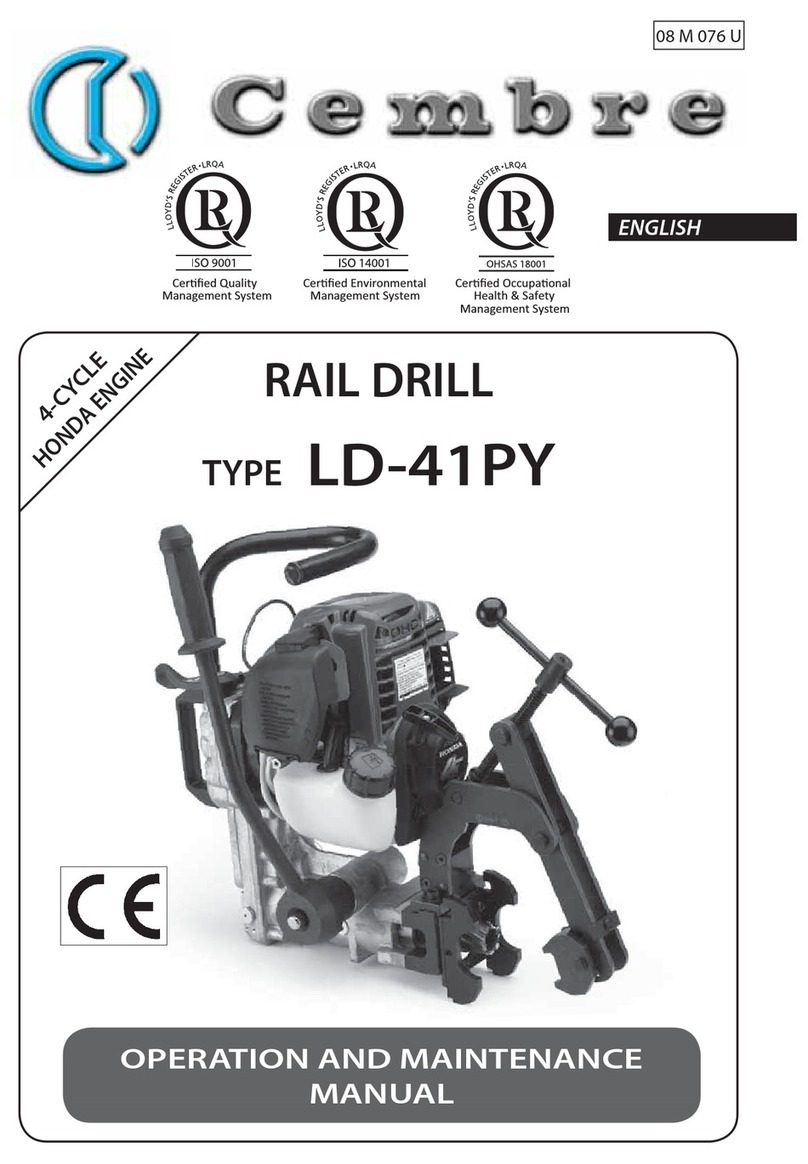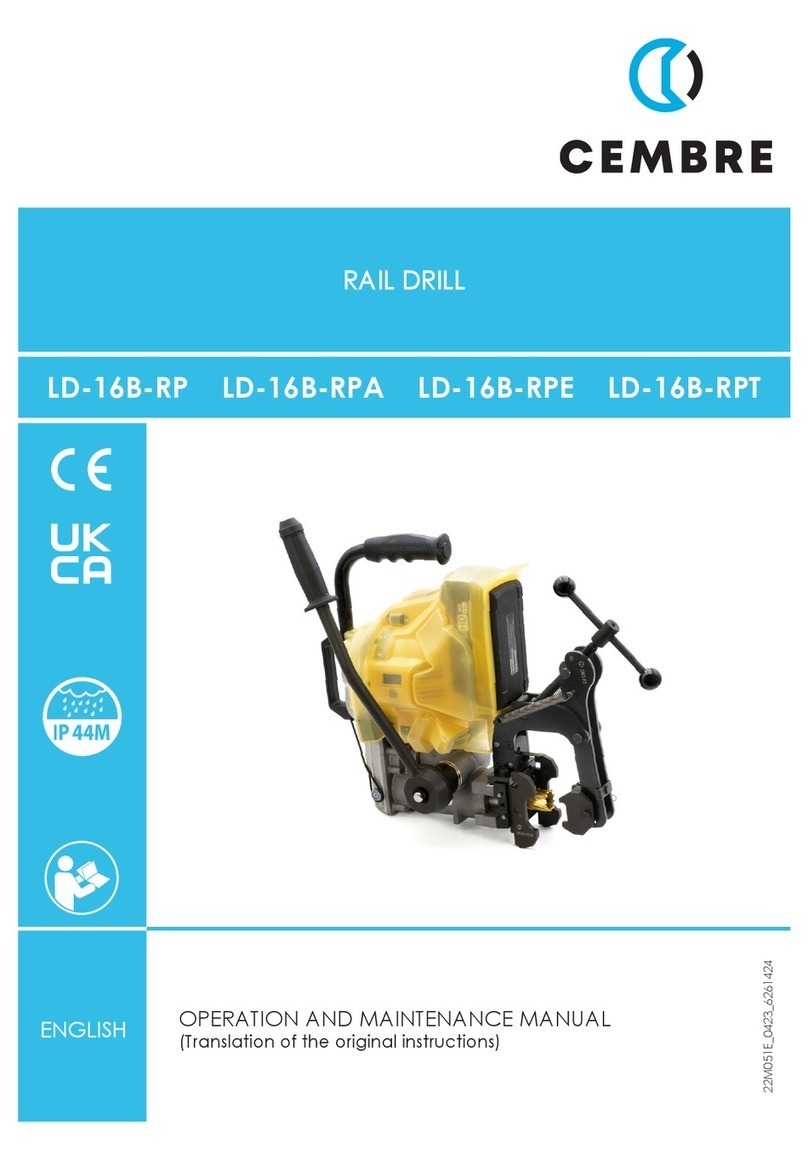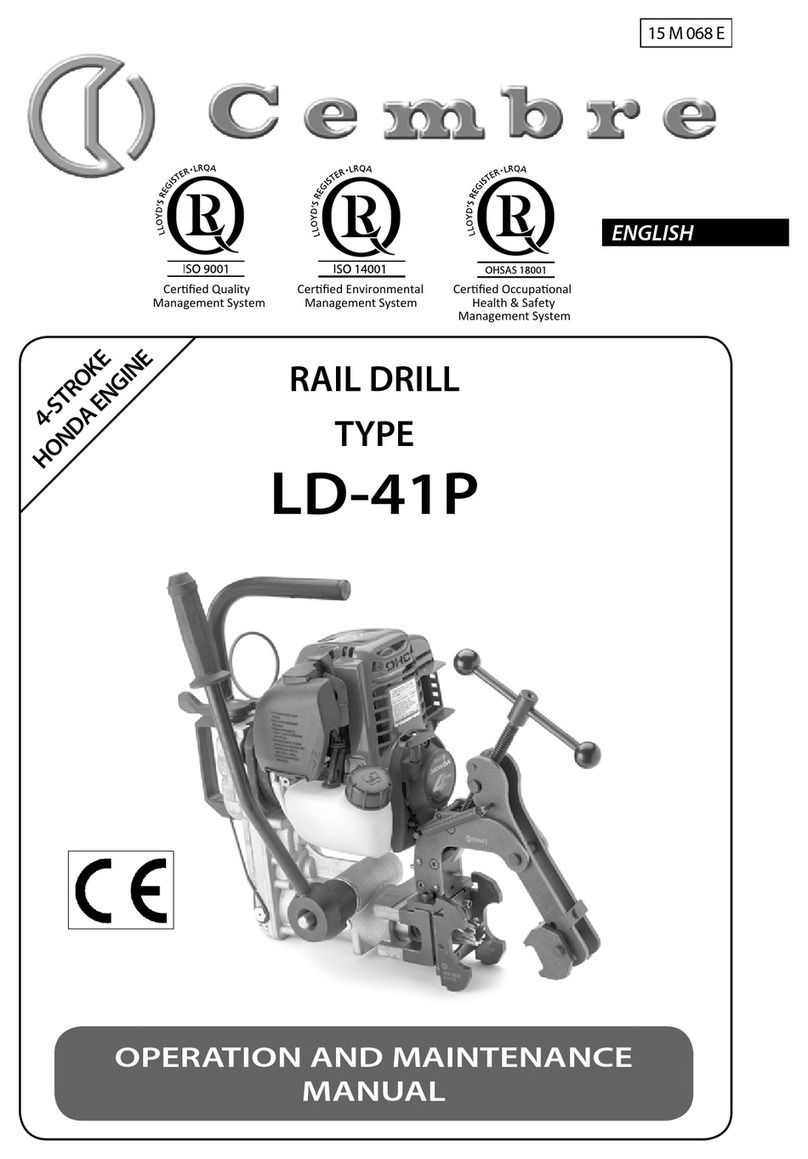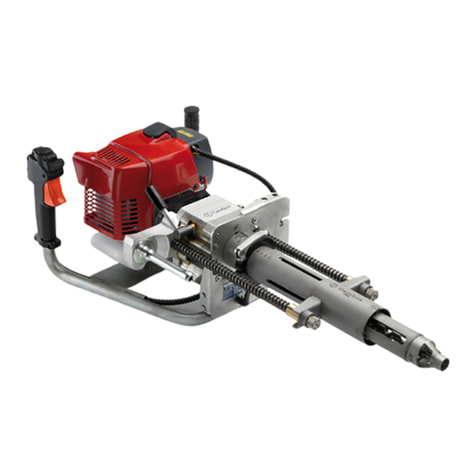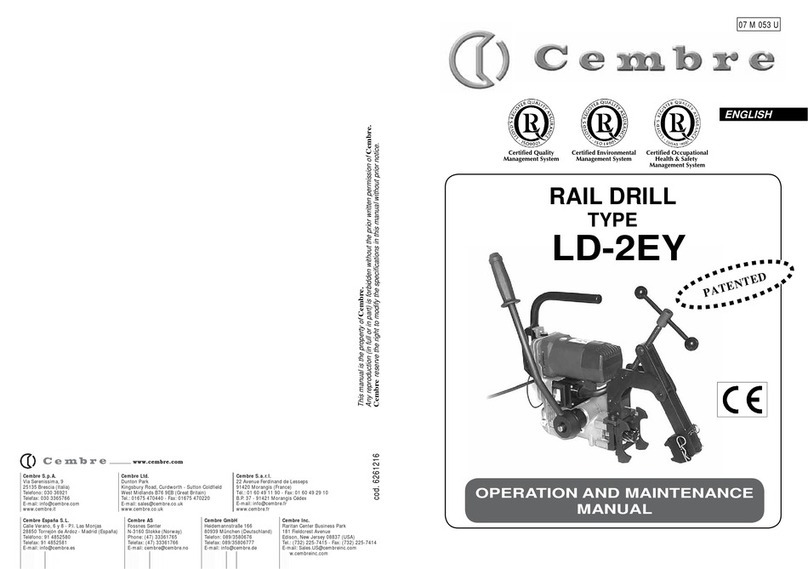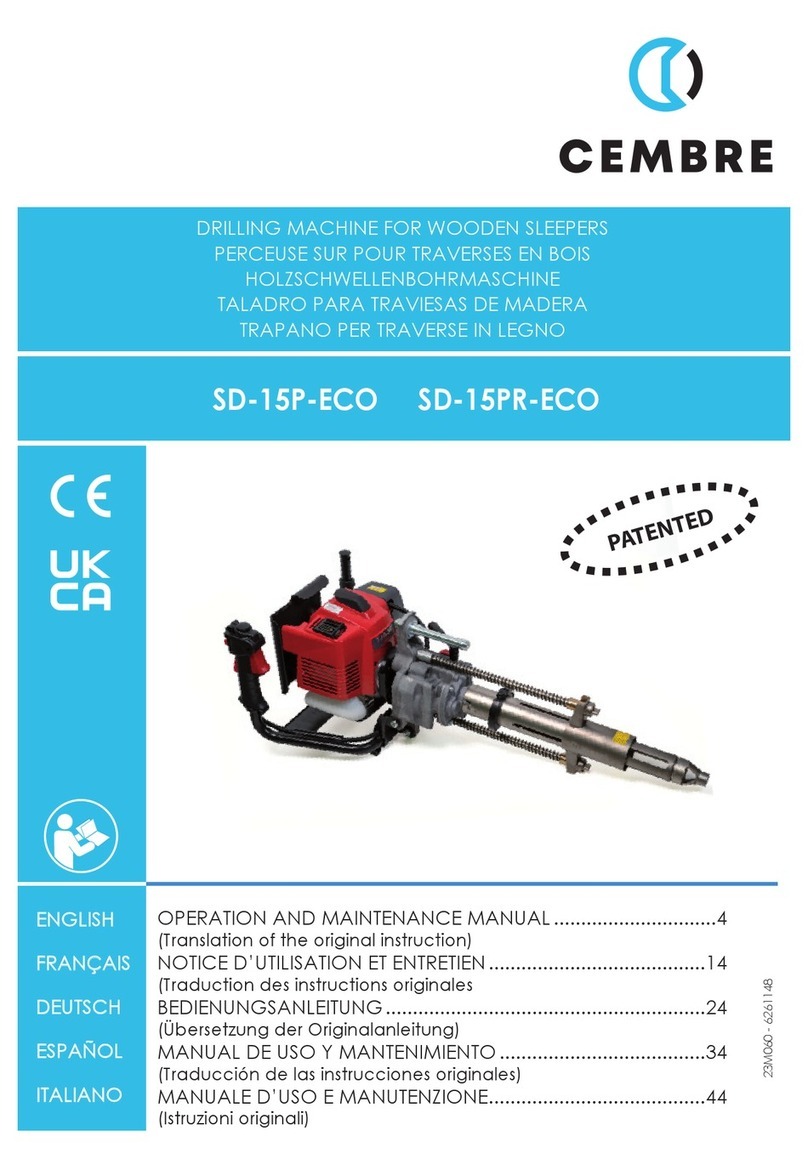
FIG. 4
Before you service or remove parts, stop the engine and allow it to cool.
Always remove the spark plug cap from spark plug when servicing
the
engine to prevent accidental starting.
After the first 10 operating hours, proceed with sump oil change, as follows:
(Ref. to Figs. 25 and 25a)
– Remove the cap with the magnetic insert (28).
– Remove the oil filler cap (07).
– Makesurethatalltheoilcomesoutbytiltingslightly
the drilling machine in order to make the operation
easier.
– Clean the cap (28) (see § 13.1.2).
– Reassemble the cap.
– Fill the oil sump to the level indicator (see § 13.1.1)
using the oil supplied with the drilling machine; it will
be necessary to use about 100 ml oil.
– Replace the oil filler cap (07).
Ensure that disposal of used oil is
in accordance with current legislation.
13.1) ORDINARY MAINTENANCE OF THE DRILL
Every 20 hours of operation
13.1.1) Topping up oil
(Ref. to Figs. 25 and 25a)
With the drill switched off and placed on a flat surface,
check the oil level in the crankcase by looking through
the transparent inspection cover (19).
The level must be approximately half way up the cover;
if the level is low, top up the oil by unscrewing the cap
(07) at the top of the crankcase and adding the quantity
of oil required.
Only use the oil grade recommended in § 1.
Never use regenerated or used oil.
The oil must be clean.
●
The drill is equipped with a coolant attachment valve (35) and a vent valve (17)
which are located as shown (Fig. 3).
If under certain operating circumstances they need to be interchanged, proceed
as follows:
– Using a 17 mm hexagonal spanner unscrew the vent valve from its seat.
– Using the 4 mm allen key provided with the drill, remove the appropriate coolant
valve from its seat and fit into the vent valve seat.
– Fit the vent valve into the vacant coolant valve seat.
●
When temperatures fall below 0° C the
lubrocoolant may freeze which could
causedamage to theseals contained in
the drill coolant system.
It is therefore advisable, when storing
the drilling machine, to empty the lu-
brocoolant system completely.
Proceed as follows (Fig. 4):
– Disconnect the quick coupling (03) from
the coolant attachment (35) on the
drilling machine.
– Tilt the machine so that the coolant
attachment is at its lowest point - allowing
for natural drainage.
– Operate the advancing lever (36) to advance
and retract the drilling spindle.
– Gently shake the machine to expel all fluid.
ARE adaptor
FIG. 5 – ARE ADAPTOR
4.1) ARE adaptor
Foruse withtype SR5000 coolant unit.The ARE adaptoris insertedin the quick-coupling
of the tank tube (Ref. to Fig. 5), it may be used to provide manual external cooling
when cutters are used to enlarge existing holes, or when using spiral bits not de-
signed for automatic cooling.
Ifnecessary theARE adaptor canalsobe usedto cleanvarious parts ofthe drill,by means
of the lubrocoolant pressure jet, e.g. parts such as the tool clamping seat in the spindle
shaft, seats for the jig fixing screws, etc.
35
36
03
926
07
19
28
FIG. 25
FIG. 25a
13. MAINTENANCE
